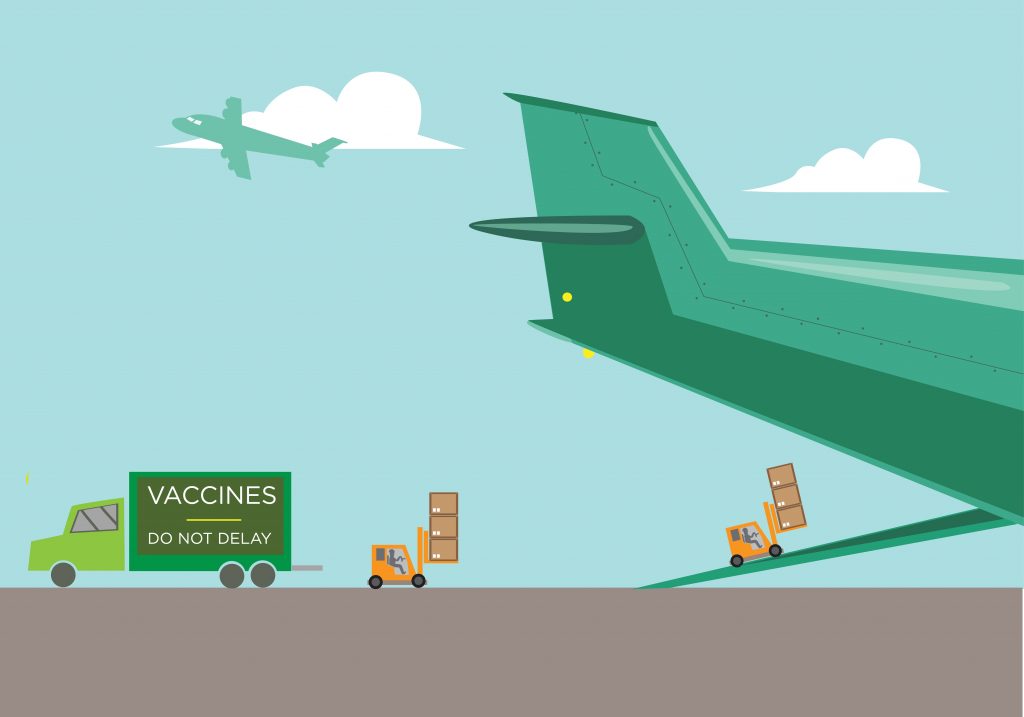By Kevin Sample, Senior Consultant at healthcare supply chain firm GHX
As COVID-19 cases continue to rise, the spotlight is once again on the healthcare supply chain
The rollout of the COVID-19 vaccine has once again put the global healthcare supply chain under the magnifying glass. As inoculation programmes are established, the demand for full vaccination kits, which include syringes, glass and personal protective equipment (PPE), is likely to put strain on the supply chain. If not addressed properly, this could lead to delivery delays and critical supply shortages similar to those seen earlier this year. So, what can hospitals and other healthcare providers do to mitigate the supply chain risk they faced at the onset of the pandemic?
A large part of the answer lies in how they use data.
Historically, the process for allocating scarce supplies has been driven by historic ordering patterns and contractual relationships. However, this approach is ill-suited in ensuring that resources are rolled out effectively and delivered to the areas of greatest need during a pandemic. It has become clear that a new allocation process, based on data-enabled predictions and real-time insight, will be critical to future pandemic responses.
Owing to the rollout of the vaccine, healthcare providers across the world require the same resources; for example, the need for specialist fridges that will work to sub-80°C and other appropriate storage facilities. As resources are quickly acquired by richer nations, more pressure is put on the global supply chain to deliver the resources needed to less economically developed countries to meet the standards needed to supply the vaccine.
Critical procurement data management
To avoid a repeat of the issues experienced during the peak months of the pandemic, healthcare procurement teams need to focus on collecting, maintaining and properly analysing the data to ensure that it is reliable, reproducible and secure. This needs to cover everything from stock levels in hospitals to manufacturing output, to better manage inventory levels, predict disruptions and help identify corrective solutions.
But what does collecting data and then properly using it look like in practice? Utilising up-to-date audit files, purchase histories and product descriptions can be a good starting point, but it must also be acknowledged that this can be time intensive. However, the increased availability of technology can help with effective data collection and utilisation. Manufacturers and healthcare providers can employ Internet of Things (IoT) devices, radio-frequency identification (RFID) tracking and software solutions to collect data to help enable real-time inventory insight, component part tracing and product transit monitoring.
Forecasting, sharing and centralising data
The critical shortages of PPE and other supplies needed in the fight against COVID-19 have exposed the weaknesses of a supply chain where information on existing inventory levels and consumption is not routinely shared between suppliers and providers. However, if the healthcare supply chain can embrace collaborative planning, forecasting and replenishment, there will be increased visibility across the supply chain for all trading partners. If this information is routinely shared, and the data is interpreted and actioned across the supply chain, it can enable a quicker response to errors and/or changes.
This approach benefits individual healthcare providers, but centralised, aggregated data collection and utilisation efforts can also help national supply chain coordination. Consider what could happen if we better shared and utilised data on age, health and density over an entire population. This information could help to better predict illness hotspots, the types and volume of clinical products that will be needed, and when and where those products will be needed; all while ensuring fair allocation and providing valuable demand signals to manufacturers and distributors.
Data-enabled vaccine supply chain
Similarly, for those rolling out the vaccine, using data in this way is going to be crucial to allocate the correct vaccination supplies to ensure outbreaks are controlled. In order to get the required supplies to the necessary areas quickly and in quantity, this targeted demand allocation needs to be built on predictive analytical models that have been developed from a foundation of robust, empirical data.
For the global supply chain to produce and distribute PPE, tests and now the vaccine effectively, supply chain teams need to have access to enough current and consistent data. With a data-enabled supply chain, healthcare providers can gain real-time insight and help better manage the distribution of essential medical supplies.



























